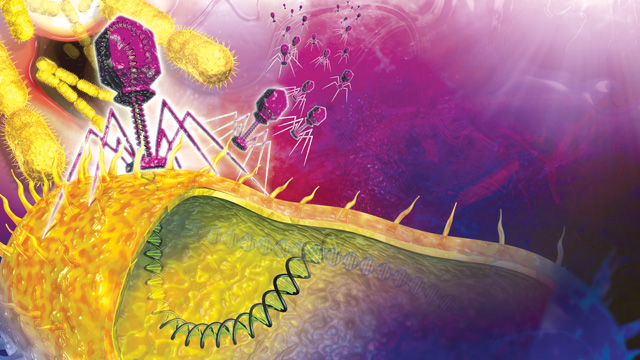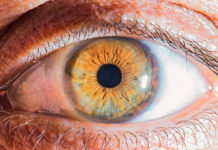 In the early 1900s, most researchers believed that DNA was a “stupid molecule,” too simple to be of any value in the transmission of life. Instead, scientists championed proteins, with their variability and complexity, as the key component of heredity. Then in the early 1950s, geneticists Alfred Hershey and Martha Chase, working with bacteria-infecting viruses called bacteriophages, confirmed DNA as the informational unit of the cell. The now-famous Hershey-Chase experiments tracked the movement of viral DNA into bacterial cells, as well as the fate of the proteins on the viral capsid, and demonstrated that viral DNA is necessary and sufficient for phage replication, implicating DNA as the molecule needed for every organism’s reproduction.
In the early 1900s, most researchers believed that DNA was a “stupid molecule,” too simple to be of any value in the transmission of life. Instead, scientists championed proteins, with their variability and complexity, as the key component of heredity. Then in the early 1950s, geneticists Alfred Hershey and Martha Chase, working with bacteria-infecting viruses called bacteriophages, confirmed DNA as the informational unit of the cell. The now-famous Hershey-Chase experiments tracked the movement of viral DNA into bacterial cells, as well as the fate of the proteins on the viral capsid, and demonstrated that viral DNA is necessary and sufficient for phage replication, implicating DNA as the molecule needed for every organism’s reproduction.
In 1953, James Watson, Francis Crick, and Rosalind Franklin solidified Hershey and Chase’s conclusions by elucidating the double-helical structure of DNA. And later, additional work with bacteriophages definitively demonstrated that DNA is the language of biology.
Viruses may be little more than a ball of genetic material with a single functional goal of transmitting pure information in the form of DNA or RNA, but researchers are finding more and more evidence that viruses freely share their genes among diverse ecosystems, making viruses a powerful and large genetic reservoir that challenges how we think about all biological life.1 As pure biological language, however, viruses are inherently difficult to understand.
For more than 130 years, since the first inkling that viruses existed, these submicroscopic entities have continued to occupy a sort of netherworld in both the scientific community and the public consciousness. According to Forest Rohwer of San Diego State University and science writer Merry Youle, bacteriophages are the dark matter of the biological universe—vital elements that don’t seem to behave the way other things do. Every time science poses a biological rule, phages seem to break it.
What is clear, however, is phages’ vital role in human and environmental health, and many laboratories across the globe are looking to uncover how bacteriophages interact with their bacterial hosts to affect the Earth’s ecosystems. Found in virtually every biome on the planet, from coral reefs to the mucus layers of many animals, bacteriophages are the most ubiquitous “organisms” on Earth. We encounter billions of phages daily in what we breathe, eat, drink, and bathe in—shedding an equally large number as we live our lives. Phages powerfully affect genetic change in soils, vegetation, and oceans, regulating nutrient cycling, evolution, and even climate change on a global scale. (See “An Ocean of Viruses,” The Scientist, July 2013.)
Phages are so integrated into healthy ecosystems that we can often overlook their essential role. Even seemingly explainable interspecies relationships, like that between aphids and their symbiotic bacteria, are proving to be a tripartite commingling, with phages providing vital genes for their bacterial hosts that subsequently benefit the macro-host as well. In the case of pea aphids, a viral gene encodes a toxin, expressed by a commensal bacteria, that imparts protection to the aphid host against parasitic wasps.2
Read More Going Viral from The Scientist














